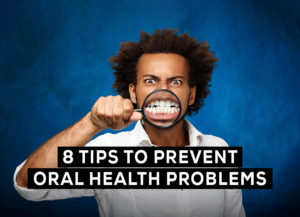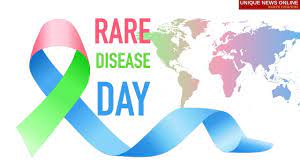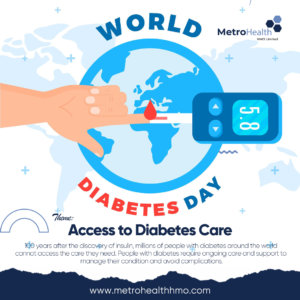Data from the Centre for Disease Control and Prevention 2020 states that cerebral palsy (CP) affects more than 17 million people worldwide. 1 in 4 children with cerebral palsy cannot talk, walk, and have epilepsy, while 1 in 2 children with CP has a mental or intellectual disability.
Every person living with cerebral palsy is a reason to strive for change, hence, it is essential to become a catalyst for change to help improve the lives of those with cerebral palsy.
CP is one of the most common lifelong physical disabilities mainly in children and has no cure. It is a congenital disorder of movement, muscle tone or posture. It also refers to a group of disorders that affect muscle movement and coordination. In many cases, vision, hearing and sensation are also affected.
CAUSES OF CEREBRAL PALSY
The exact cause of CP is unknown, however, some of the possible causes include:
- Abnormal brain development or injury to the developing brain: The brain damage usually occurs before birth, but it can also happen during birth or the first few years of life.
- Perinatal Asphyxia or a shortage of oxygen to the brain during labor and delivery.
- Gene mutations result in abnormal brain development.
- Severe jaundice in the infant.
- Maternal infections, such as German measles, and herpes simplex.
- Brain infections, such as encephalitis and meningitis.
- Intracranial haemorrhage, or bleeding into the brain.
- Head injuries due to a car accident, a fall, or child abuse.
RISK FACTORS OF CEREBRAL PALSY
Certain factors put babies at an increased risk for CP, these include:
- Premature birth
- Low birth weight, less than 2.5kg
- Being a twin or triplet
- A low Apgar score
- Breech birth
- Rhesus incompatibility
- Maternal exposure to toxic substances, such as methylmercury, while pregnant
TYPES OF CEREBRAL PALSY
Depending on which areas of the brain are affected, each type causes a specific movement disorder. The type of CP includes:
- Spastic cerebral palsy: It is the most common type. It causes stiff muscles (spasticity) and exaggerated reflexes, making it difficult to walk, such as crossing the knees or making scissor-like movements with the legs while walking. Muscle weakness and paralysis may also be present.
- Dyskinetic cerebral palsy: It results in uncontrollable movements (dyskinesia) and in some cases, the face and tongue are also affected. The movements can be slow and writhing or rapid and jerky which makes it difficult for the affected person to walk, sit, swallow, or talk.
- Ataxic cerebral palsy: It is the least common type, there is poor balance and coordination (ataxia). They may have difficulty walking and performing fine motor functions, such as grasping objects and writing.
- Mixed cerebral palsy: Some people have a combination of symptoms from the different types of CP. This is called mixed CP, and in most cases of mixed CP, people experience a mix of spastic and dyskinetic CP.
- Hypotonic cerebral palsy: This leads to diminished muscle tone and overly relaxed muscles. The arms and legs move very easily and appear floppy, like a rag doll. Babies with this type of CP have little control over their heads and may have trouble breathing, and as they grow older, they may struggle to sit up straight because of their weakened muscles. They can also have difficulty speaking, poor reflexes, and walking abnormalities.
SYMPTOMS OF CEREBRAL PALSY
The effects of CP change from person to person and include:
- Delay in reaching motor skill milestones, such as rolling over, sitting up alone, or crawling
- Variation in muscle tone, such as being too floppy or too stiff
- Delay in speech development and difficulty speaking
- Spasticity or stiff muscles and exaggerated reflexes
- Ataxia or a lack of muscle coordination
- Tremor or involuntary movements
- Excessive drooling and problems with swallowing
- Difficulty walking
- Neurological problems, such as seizures, intellectual disabilities, and blindness
TREATMENT OF CEREBRAL PALSY
There is no cure for CP, but treatment can improve the lives of those who have the condition. It is important to begin a treatment program as early as possible.
Treatment depends on the severity, after a CP diagnosis is made, a team of health professionals works with the child and family to develop a plan to help the child reach his or her full potential. Common treatments include medicines; surgery; braces; and physical, occupational, and speech therapy. No single treatment is the best one for all children with CP.
PREVENTION OF CEREBRAL PALSY
Problems that cause CP can not always be prevented, however, if you are pregnant or planning on becoming pregnant, you can take certain preventive measures to minimize complications.
- Get vaccinated against diseases that can cause fetal brain damage, such as rubella.
- Avoiding exposure to infections or viruses known to impact fetal health, such as German Measles, Cytomegalovirus or Zika
- Controlling underlying health issues, such as blood pressure, diabetes, etc.
- Receiving adequate prenatal care.
- Attending regular appointments during pregnancy can help prevent premature birth, low birth weight, and infections.
- Avoiding alcohol, cigarettes, recreational drugs, and prescription drugs are known to pose risks during pregnancy
- Identifying any potential Rh incompatibility between mother and child
- Using the correct car seat for your child’s weight and height
- Using a crib with a bed rail
- Never leave a child on high countertops or surfaces unattended
- Never shake a baby
CONCLUSION
While there is no magical formula or method that would guarantee a healthy baby, there are a few things that parents can do to reduce the risks to their baby. Prevention during pregnancy is based on maintaining good habits and staying healthy.










One Response
Very interesting,
Well researched.
Thanks for sharing